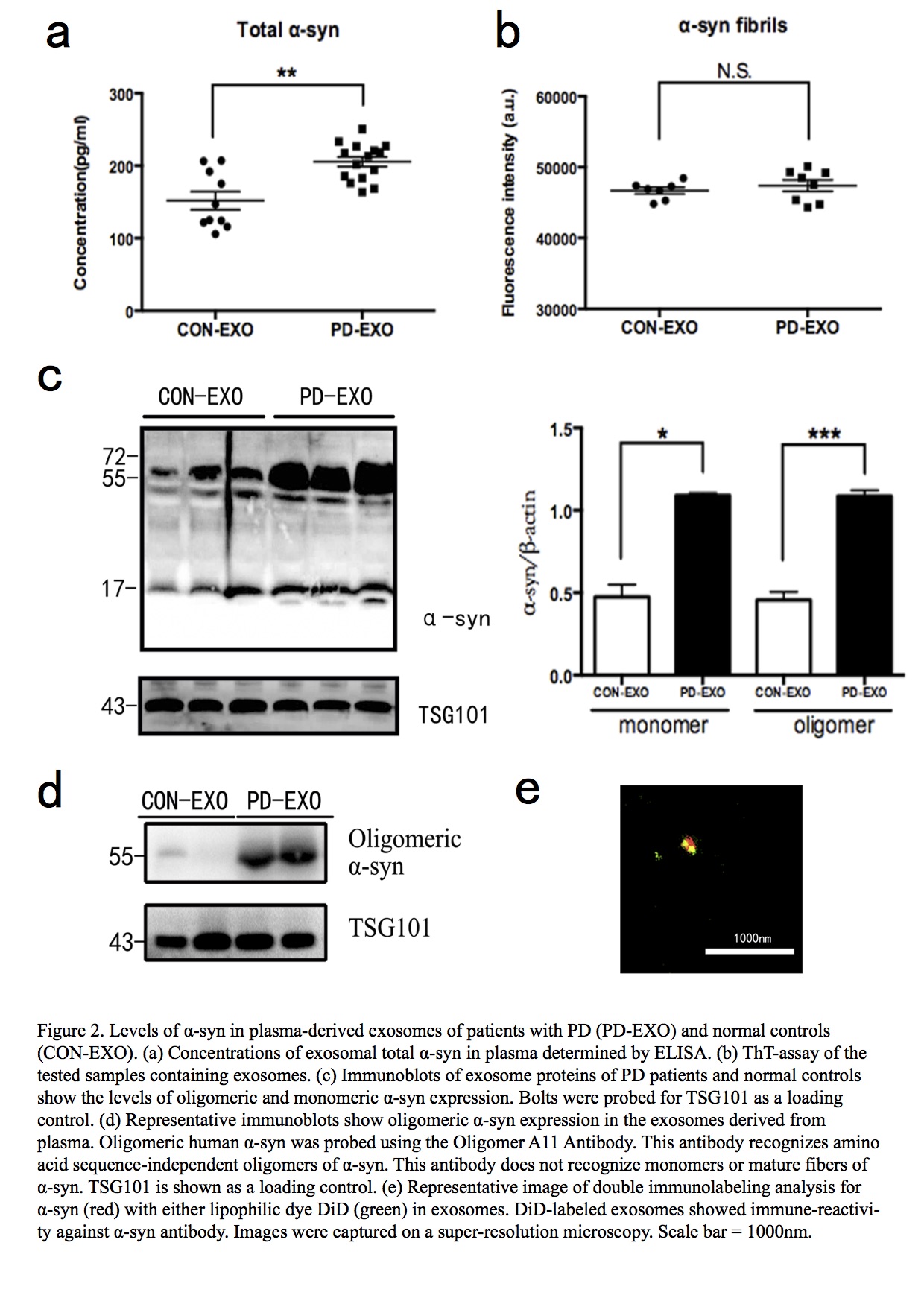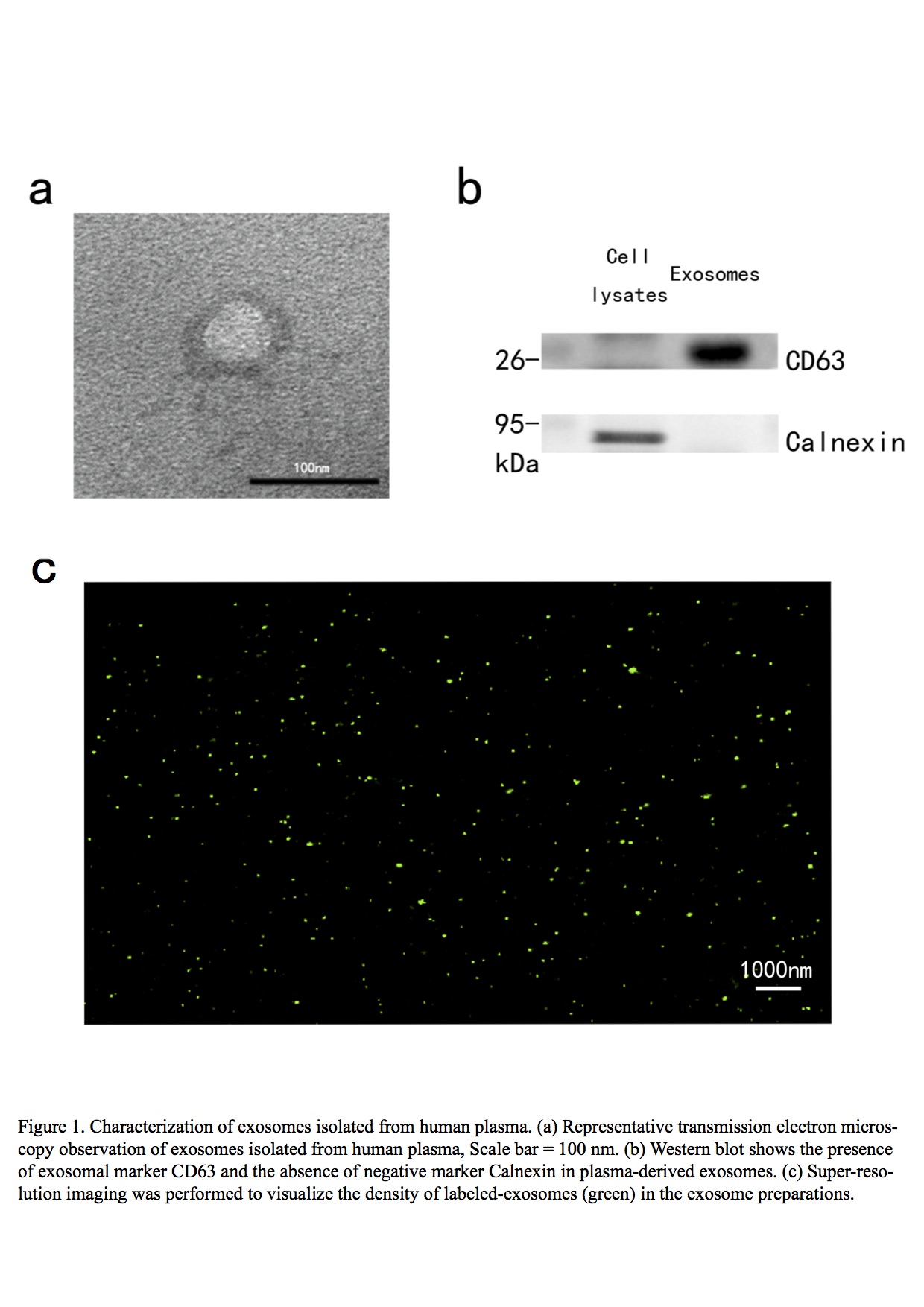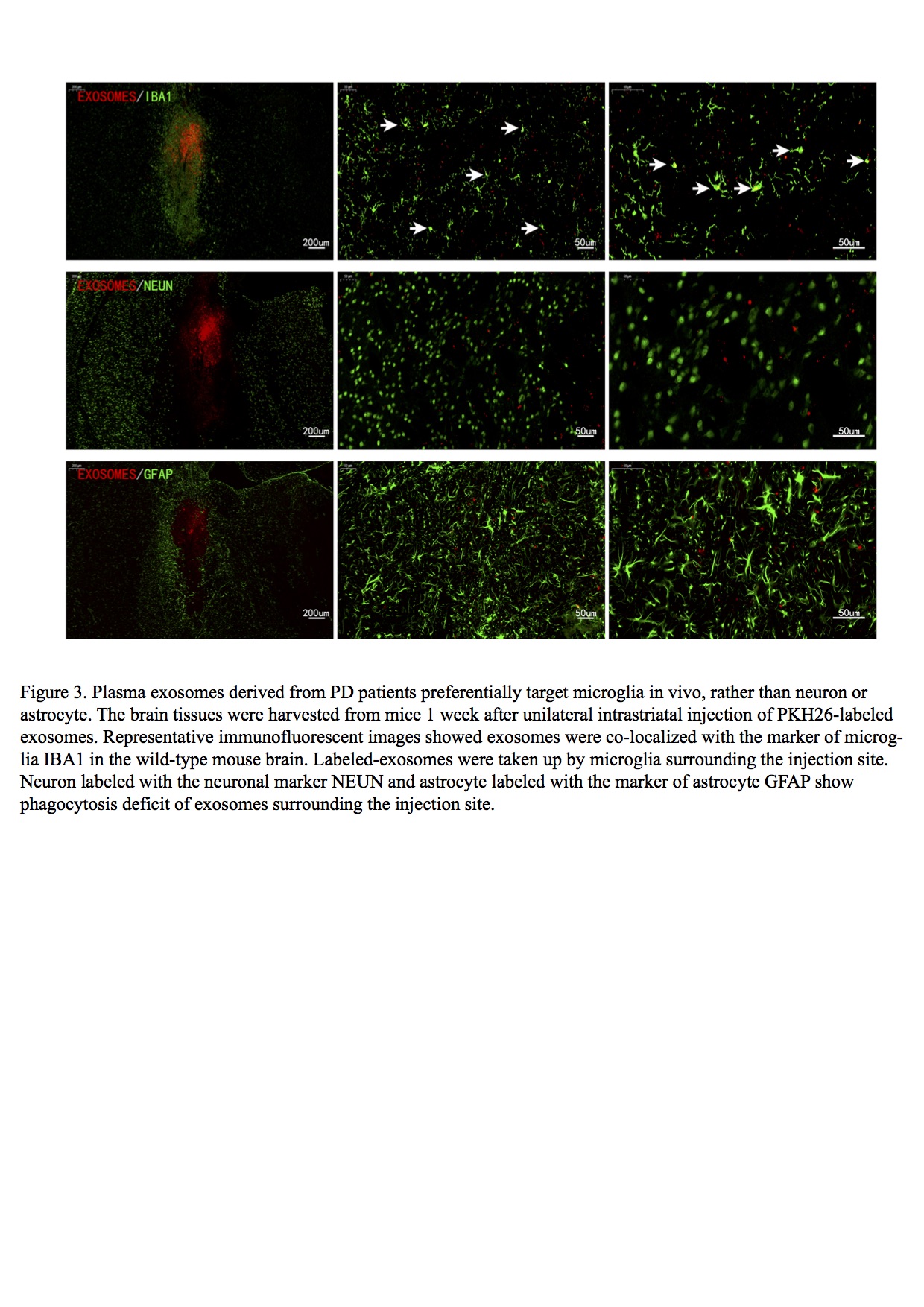Session Information
Date: Monday, October 8, 2018
Session Title: Parkinson's Disease: Pathophysiology
Session Time: 1:15pm-2:45pm
Location: Hall 3FG
Objective: we investigated the role of microglia in the transmission of α-syn-containing exosomes and offer a new insight into the mechanism of PD pathogenesis.
Background: Current understanding of the pathophysiology of Parkinson’s disease (PD) suggests a key player of “prion like” propagation of alpha-synuclein (α-syn) in the pathogenesis.The idea that exosomes may be involved in the spreading of α-syn has recently gained considerable attention. Previous studies have shown that the activation of microglia is associated with the aggregation of α-syn in PD, suggesting an important role of microglia in clearing α-syn. In this study, we investigated the role of microglia in the transmission of α-syn-containing exosomes and offer a new insight into the mechanism of PD pathogenesis.
Methods: The exosomes-rich fraction was purified from the plasma of PD patients treated BV2 cells and healthy controls using a standard protocol of differential ultracentrifugation. Twenty sporadic mild-late stage PD patients were rolled. The concentrations of α-syn in the plasma-derived exosomes were determined by enzyme-linked immunosorbent assay (ELISA), thioflavin T-assay and western blot analysis. PKH26-labeled exosomes were stereotaxically injected into the unilateral striatum of 8-month-old mice. After 1 week of exposure, brain sections were double stained with the cell marker antibodies of brain cells. Plasma exosomes was added to the microglial cell lineBV2; then expression levels of α-syn, IBA1, LC3, P62 and Beclin1 were analyzed by western blotting(WB). Detection of TNF-α and IL-6 by ELISA were performed.
Results: The concentrations of total, oligomeric and monomeric α-syn in the plasma-derived exosomes were higher in patients with PD versus healthy controls.Intrastriatally infused exogenous exosomes are taken up by microglia and transported to substantianigra and cortex. Plasma exosomes preferentially target microglia and BV2 cells in vivo, rather than neuron or astrocyte. Plasma exosomes increased IBA1, Beclin1and P62 expression, the NO production ,TNF-α and IL-6 secretion. the ratio of the LC3 II/I .A significant elevation of oligomeric and monomeric α-syn protein level in exosomes-treated cells as compared to non-treated BV2 cells was observed.
Conclusions: Plasma exosomes derived from PD patients were highly selectively uptake by microglia in vivo and vitro.Moreover, exosomes with toxic a-syn can activate microglia cells, thereby inhibiting autophagy activity, reducing the scavenging activity of microglia cells, and further promoting the transmission of a-syn.
References: 1. Li, J.Y., et al., Lewy bodies in grafted neurons in subjects with Parkinson’s disease suggest host-to-graft disease propagation. Nat Med, 2008. 14(5): p. 501-3. 2. Wang, S., et al., alpha-Synuclein, a chemoattractant, directs microglial migration via H2O2-dependent Lyn phosphorylation. Proc Natl Acad Sci USA, 2015. 112(15): p. E1926-35. 3. Stuendl, A., M. Kunadt, N. Kruse, C. Bartels, W. Moebius, K.M. Danzer, B. Mollenhauer, and A. Schneider, Induction of alpha-synuclein aggregate formation by CSF exosomes from patients with Parkinson’s disease and dementia with Lewy bodies. Brain, 2016. 139(Pt 2): p. 481-94.
To cite this abstract in AMA style:
Y. Xia, G. Zhang, J. Huang, N. Xiong, K. Ma, X. Guo, F. Wan, L. Kou, S. Yin, T. Wang. Role of microglia in the transmission of α-syn-containing exosomes [abstract]. Mov Disord. 2018; 33 (suppl 2). https://www.mdsabstracts.org/abstract/role-of-microglia-in-the-transmission-of-%ce%b1-syn-containing-exosomes/. Accessed January 7, 2026.« Back to 2018 International Congress
MDS Abstracts - https://www.mdsabstracts.org/abstract/role-of-microglia-in-the-transmission-of-%ce%b1-syn-containing-exosomes/



